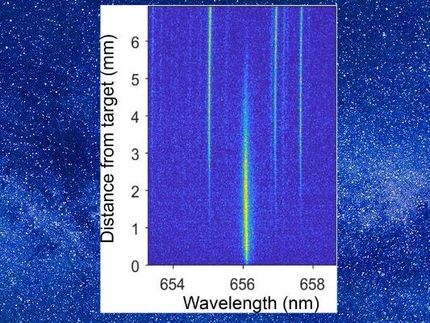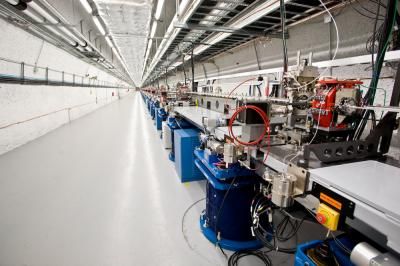New method to separate much-needed medical isotopes
Individual atoms of a certain chemical element can be very stubborn when it comes to separation, mainly because techniques rely on a difference in chemical and physical properties — atoms are almost identical in both regards.
However, if you peer closely enough into the atoms, there are subtle differences that can have very big effects. These "different" atoms, called isotopes, are heavily relied on in areas of medicine and nuclear energy and now researchers have proposed a novel way of isolating them.
Reported in the Institute of Physics and German Physical Society's New Journal of Physics, this new proposal combines a simple laser with a set of specifically aligned magnets to extract the desired atoms, and offers an alternative to the only general-purpose separator, called a Calutron, which is currently operating in Russia.
The Calutron, first invented by Ernest Lawrence in the 1930s, is still used to separate most elements in the periodic table; however, the US government has made it clear in its recommendations that the world is facing a supply crisis that the Russian Calutron cannot resolve.
Mark Raizen, lead author of the study and Professor of Physics at the University of Texas at Austin, said: "One thing is clear: isotopes are indispensable to the advancement of medicine. Calcium-48, for example, is used in the diagnosis of osteoporosis and bone development in children and nickel-64, which can be converted to copper-64, is a promising isotope for imaging and cancer therapy."
An atom's type is determined by its number of protons; an isotope is a variant of an atom because of its different number of neutrons — the neutral, subatomic particles that live in the nucleus at the centre of atoms.
For example, carbon-12, carbon-13 and carbon-14 are three isotopes that can be found in a regular sample of carbon and have six, seven and eight neutrons, respectively (every carbon atom also has six protons in its nucleus, making up the whole number that follows each isotope name).
The researchers, from the University of Texas at Austin, propose three simple steps in their new method. The starting point is to create a flow of atoms of a particular element. Simple, low-powered lasers will then be fired at this stream of atoms, in a process called optical pumping.
"Optical pumping involves atoms being pumped into a particular desired state by the absorption of photons from a laser with a particular polarization. This state could be one that is repelled by the magnetic field, or attracted to the magnetic field, depending on the polarization of the laser," continued Professor Raizen.
After the optical pumping, the stream of optically pumped atoms would pass through a set of magnetic barriers, aligned in a specific manner. In this part of the proposed apparatus, the isotopes that researchers do not require will become attracted to the magnets and the required isotopes will pass through freely, allowing them to be collected.
Computer simulations showed the researchers' method could obtain 99.96% of lithium-7 from a sample, suggesting it would be an ideal means of getting hold of this very important isotope — lithium-7 is used in cooling water in the nuclear industry.
The most recent method used to obtain lithium-7 required enormous levels of mercury, which is a very toxic metal, and was consequently terminated at Oak Ridge National Laboratory, Tennessee.
Most read news
Other news from the department science

Get the chemical industry in your inbox
From now on, don't miss a thing: Our newsletter for the chemical industry, analytics, lab technology and process engineering brings you up to date every Tuesday and Thursday. The latest industry news, product highlights and innovations - compact and easy to understand in your inbox. Researched by us so you don't have to.





























































